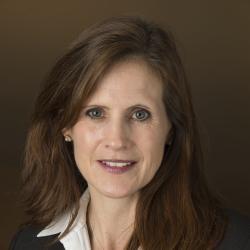As we move into late July, cities across the country are ramping up their summer youth employment programs (SYEPs) to help connect young people to the labor market.
Summer jobs programs are typically one of a city or county’s highest-profile youth employment programs. They usually last five to seven weeks and provide work opportunities to teens and young adults who might otherwise struggle to find jobs. They offer a paycheck, employment experience, and other organized activities in the service of multiple goals: increasing participants’ income, developing young people’s skills and networks to improve their labor market prospects, and offering constructive activities to promote positive behavior. Most SYEP positions are subsidized and in the public and nonprofit sectors, although some cities also secure unsubsidized and private sector placements
Our new research on Boston’s summer jobs program adds to the growing evidence base of the benefits of SYEPs—most notably around crime and academic outcomes. This new research focuses specifically on youth in private sector job placements, and finds positive effects on attendance, course performance, test scores, high school graduation rates, and postsecondary enrollment.
Although not all youth benefit equally from SYEPs, they can provide transformative experiences that help level the playing field for marginalized groups. And since young people sign up in large numbers (programs are often oversubscribed), they offer a tremendous opportunity to reach many young people when they are receptive and need labor market guidance.
Success depends upon strong outreach to area businesses and high school students
Since SYEPs enroll young people of varying ages, skills, and readiness, programs do their best to make good matches between participants and work sites. Younger teens and those with less work experience typically work in subsidized public and nonprofit organizations. Private sector placements are reserved for older teens, such as juniors or seniors in high school, and sometimes require interviews akin to those for internships or entry-level jobs. Private sector employers often pay the wages themselves, which enables programs to expand the scale and scope of employment experiences without overreaching financially.
Boston’s Private Industry Council (PIC), the city’s workforce development board and where one of the authors of this piece works, operates the private sector arm of the Boston summer jobs program, brokering about 1,300 internships. The PIC works closely with Boston Public Schools (BPS) to recruit and prepare students for summer internships, and conducts extensive outreach with area employers to secure hiring commitments for the summer.
The work begins each fall with PIC career specialists conducting outreach in 31 BPS high schools, working with roughly 2,600 students to prepare them for a summer internship with a private sector firm through a series of work-readiness workshops and career exploration activities. At the same time, the PIC employer engagement team secures hiring commitments from nearly 70 top employers, which range from Fortune 500 companies to hospitals to technology startups. Top employers have included Massachusetts General Hospital, Brigham and Women’s Hospital, the Dana-Farber Cancer Institute, State Street Corporation, John Hancock Financial Services, the Federal Reserve Bank of Boston, and Vertex Pharmaceuticals.
To broker the placements, PIC staff prepare students to interview with employers aligned to their interests and skillsets, and employers make the final decision of whether to offer a position. Students who are not placed in a private sector internship can seek subsidized employment through the PIC or the city’s publicly funded SYEP—most likely at a community-based nonprofit. PIC staff will also coach students through the process of applying for jobs outside of their network of employers.
In addition to covering youth wages, private sector internships expose students to a greater variety of industries—such as health care, finance, real estate, insurance, and life sciences—compared to jobs sponsored by publicly funded SYEPs and those that teens find on their own, which are typically in retail, accommodations, and food services. Students usually work 30 to 35 hours per week for six weeks from early July through mid-August, and are paid at least the Massachusetts state minimum wage.
To ensure firms are providing meaningful employment experiences, the PIC encourages employers to use the Massachusetts Work-Based Learning Plan. The plan prompts employers to develop a job description, lays out basic performance expectations (such as punctuality, communication, and initiative), lists a variety of skills that are more specific to particular workplaces and careers, and provides a structure for supervisors to assess participants against those expectations and skills at the beginning and end of the summer.
The PIC’s summer internships show multiple academic benefits for participants
Previous evaluations on summer jobs programs focused on subsidized jobs in the public and nonprofit sector. In our new research, we sought to better understand the impacts of the PIC program and how it compares to Boston’s publicly funded SYEP.
Our study shows that participating in a PIC-brokered private sector internship is associated with improvements in attendance, course performance, and high school graduation rates that are similar in magnitude to publicly funded SYEPs. PIC participants attended two additional school days, were less likely to fail a course after participating in the program, and were more likely to score as “proficient” on statewide high school exams than the comparison group. All of these factors help contribute to PIC participants being 5.4 percentage points more likely to graduate from high school on-time relative to their peers—similar to the impacts of publicly funded SYEPs on youth, which have been documented using experimental studies based on lottery assignment.
Unlike the subsidized jobs program, however, participation in the PIC program is also associated with improvements related to postsecondary education. PIC participants were more likely to take the SAT than their peers, although there was no significant difference in test scores. PIC participants were also 6.1 percentage points more likely to enroll in any postsecondary institution relative to the comparison group, and they were more likely to enroll in four-year institutions than two-year institutions. At this point, we don’t know whether these differential impacts are associated with greater exposure to careers and/or different mentors through the PIC program—fodder for future research.
Because youth are not assigned by lottery, we might be concerned about which youth actually benefit from this program. Although PIC participants are more likely to be older students in grades 11 or 12, they are no more advantaged than the general BPS population, and a greater proportion of them are non-white, low-income, or male—characteristics that are less correlated with attending college. In fact, we find that PIC participants who attend traditional BPS schools experience a bigger boost in college enrollment than those attending the city’s prestigious exam schools. This suggests the program’s impacts may stem from connecting less-advantaged students to occupations and industries that require postsecondary education.
Why we should invest in high-quality summer jobs programs
In any summer jobs program, unsubsidized private sector positions are a valuable complement to subsidized placements in public and nonprofit entities. They offer a broader set of opportunities for the most work-ready young people, and because employers pay the wages, they allow for program growth with lower costs.
However, developing private sector placements and preparing young people for those placements is a high-touch endeavor compared to the process cities typically use to place young people in subsidized positions—which is already a fairly complicated logistical process. In Boston, the PIC’s capacity to act as an intermediary between the SYEP and private sector employers is key to keeping employers coming back summer after summer. Other research identified both program design and organizational capacity—such as staff with the right skills and adequate information management systems—as central to the success of any summer jobs program.
SYEPs are popular with city leaders, teens, and their families, and the evidence base for their effectiveness is growing. With additional federal funding available through the American Rescue Plan Act, local governments can invest in the organizational capacity necessary to provide a strong backbone for these programs and attract new private sector partners, especially given the historically tight labor market, with employers struggling to fill entry-level positions. For the private sector, partnering with SYEPs to provide youth with high-quality opportunities can be a win-win for employers seeking to fill jobs in the near term while building a more diverse workforce for the future.



Commentary
How private sector summer employment programs are expanding benefits for young people
July 18, 2022